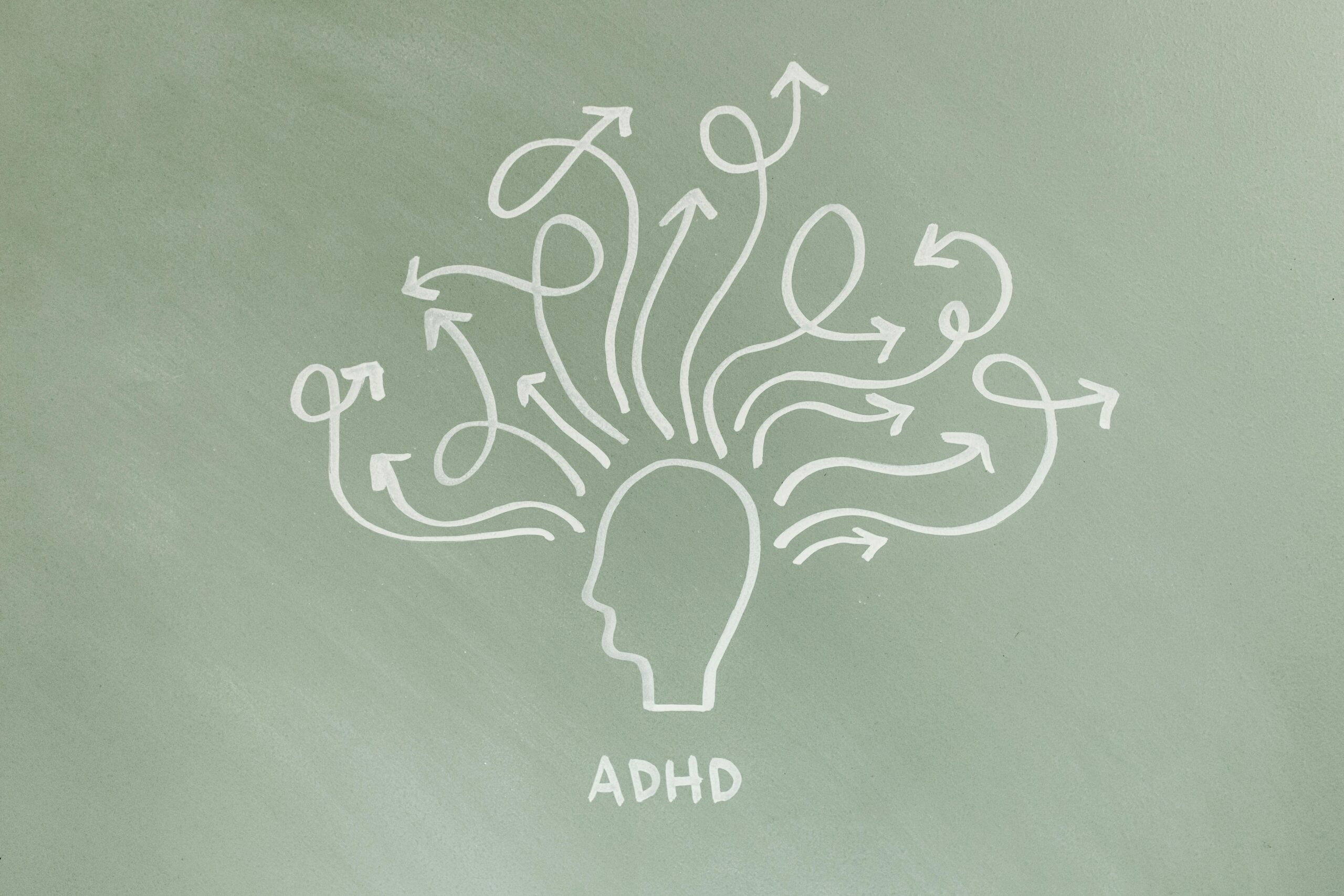Why So Many Women Go Undiagnosed — and What You Can Do About It
When most people think of ADHD, the image that comes to mind is often “hyperactive young boys.” While that’s one valid presentation, it’s also a narrow and misleading stereotype — one that leaves many women misdiagnosed, misunderstood, or completely overlooked.
Across social media and clinical spaces, more and more adult women are sharing a common story:
“I was diagnosed with ADHD in my 30s or 40s, and suddenly, everything made sense.”
So why does ADHD in women so often go undiagnosed?
ADHD Research Has Historically Focused on Boys
For decades, most ADHD research focused on boys, especially those with externalized, disruptive symptoms. As a result, diagnostic criteria were shaped around a presentation that doesn’t reflect how ADHD typically shows up in girls or women.
While boys with ADHD are more likely to be impulsive and hyperactive, girls and women are more often:
- Inattentive
- Emotionally sensitive
- Internalizing their struggles (not acting out)
These quieter symptoms are often misdiagnosed as anxiety or depression, or dismissed altogether.
How ADHD Presents Differently in Women
ADHD symptoms — including inattention, hyperactivity, and impulsivity — can look very different in women compared to men. Here are some key differences:
- Inattentiveness Over Hyperactivity
Women are more likely to have the inattentive or combined type of ADHD. Symptoms may include:
- Trouble focusing
- Chronic forgetfulness
- Disorganization
- Mental “fog” or daydreaming
These traits are often mistaken for stress or anxiety, not ADHD.
- Internalized Struggles
Instead of acting out, many women with ADHD internalize their difficulties, leading to:
- Low self-esteem
- Excessive people-pleasing
- Perfectionism
- Shame or guilt around productivity and performance
- Emotional Dysregulation
Women with ADHD may experience:
- Intense emotions and mood swings
- Sensitivity to rejection or criticism
- Misdiagnoses of mood disorders (e.g., depression, dysthymia, or borderline personality traits)
- Masking and Overcompensation
From a young age, girls are often taught to be polite, quiet, and compliant. Many women learn to “mask” their symptoms by:
- Overpreparing and overworking
- Relying on lists, calendars, and routines
- Pushing through exhaustion to meet expectations
This can delay diagnosis until adulthood — often after a triggering life event such as childbirth, career transitions, or burnout.
The Role of Hormones in ADHD
Estrogen plays a key role in regulating dopamine — a neurotransmitter central to ADHD. This means hormonal fluctuations can significantly impact symptoms.
Common life stages where symptoms may intensify:
- Puberty
- Menstruation
- Postpartum period
- Perimenopause and menopause
Many women only recognize their ADHD when they find their usual coping strategies no longer work. Some even benefit from adjusting ADHD medication doses during high-symptom times in their cycle, under medical supervision.
Common Co-Occurring Conditions in Women
Women with ADHD are more likely to have overlapping mental health concerns, which can obscure the diagnosis:
- Anxiety and depression
- Eating disorders (especially binge eating or bulimia)
- Sleep disorders
- Burnout
- Borderline personality traits
These co-occurring conditions may lead healthcare providers to treat the symptoms but miss the underlying cause.
Quick Comparison: How ADHD Tends to Differ by Gender
| Feature | More Common in Males | More Common in Females |
| ADHD Subtype | Hyperactive/Impulsive | Inattentive |
| Behavioural Traits | Externalized (disruptive) | Internalized (quiet, distracted) |
| Age at Diagnosis | Childhood | Adulthood (often 30s–40s) |
| Common Comorbidities | Oppositional behaviours | Anxiety, depression, eating disorders |
| Coping Mechanisms | Acting out, substance use | Masking, overcompensating |
The Power of an Accurate Diagnosis
Getting an accurate ADHD diagnosis can be a turning point — especially for women who’ve spent years blaming themselves for their struggles.
Benefits of Diagnosis Include:
- Tailored Treatment Plans
- Cognitive Behavioural Therapy (CBT)
- Medication (stimulant or non-stimulant)
- Executive Function Coaching
- Sleep, diet, and lifestyle support
- Peer groups and community connection
- Better Mental Health
- Understanding ADHD can reduce anxiety, depression, and burnout
- Improved Quality of Life
- With proper support, many women experience newfound clarity, confidence, and productivity
You’re Not Alone — And You Don’t Have to Mask Anymore
A formal diagnosis can help you reframe years of frustration and unlock support that actually fits you.
Whether you’re just starting to wonder, or you’ve long suspected ADHD, you don’t need to have it all figured out to take the next step.
At Downtown Psychology Clinic, we offer inclusive, compassionate ADHD assessments and therapy tailored to the way ADHD actually presents — not just how it’s “supposed” to look.
We’re here to listen, support, and guide you — without judgment.
____________________________________________________________________________________________
The content of this blog is for informational purposes only, and is not intended to be a substitute for professional medical or psychological advice, diagnosis or treatment. Always seek the advice of your mental health provider or physician with any questions that you have regarding mental health concerns. If you think you have an emergency, please call 911 or visit your nearest emergency room.


